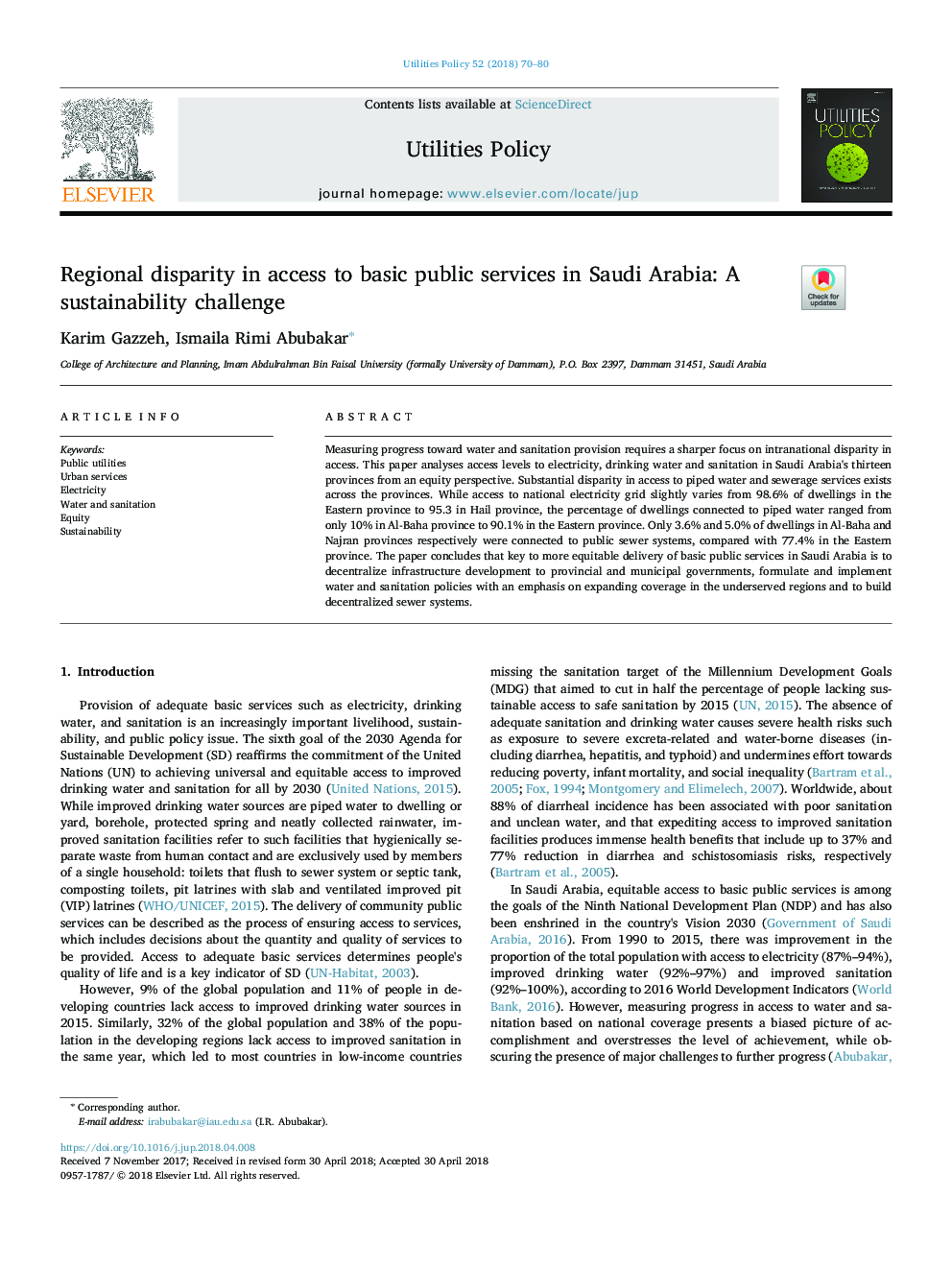| Article ID | Journal | Published Year | Pages | File Type |
|---|---|---|---|---|
| 7411191 | Utilities Policy | 2018 | 11 Pages |
Abstract
Measuring progress toward water and sanitation provision requires a sharper focus on intranational disparity in access. This paper analyses access levels to electricity, drinking water and sanitation in Saudi Arabia's thirteen provinces from an equity perspective. Substantial disparity in access to piped water and sewerage services exists across the provinces. While access to national electricity grid slightly varies from 98.6% of dwellings in the Eastern province to 95.3 in Hail province, the percentage of dwellings connected to piped water ranged from only 10% in Al-Baha province to 90.1% in the Eastern province. Only 3.6% and 5.0% of dwellings in Al-Baha and Najran provinces respectively were connected to public sewer systems, compared with 77.4% in the Eastern province. The paper concludes that key to more equitable delivery of basic public services in Saudi Arabia is to decentralize infrastructure development to provincial and municipal governments, formulate and implement water and sanitation policies with an emphasis on expanding coverage in the underserved regions and to build decentralized sewer systems.
Related Topics
Physical Sciences and Engineering
Energy
Energy (General)
Authors
Karim Gazzeh, Ismaila Rimi Abubakar,
